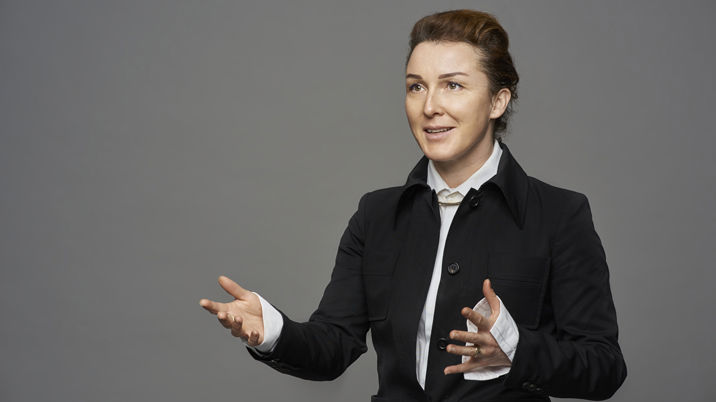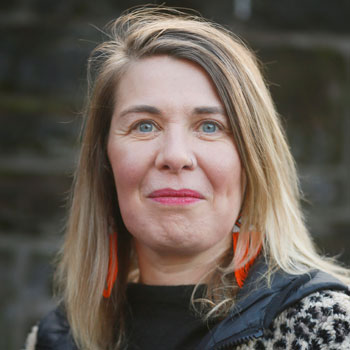
Unprecedented riots on the streets of Britain, ongoing conflicts in Ukraine and the Middle East, even the prospect of a convicted villain leading the US into yet more uncharted waters. The news cycle feels dominated by a depressing litany of death, destruction and misery.
The latest Digital News Report from the Reuters Institute, published this summer, reiterated that publishers are struggling to connect with much of the public, and growing numbers of people selectively, and in some cases continuously, avoiding the news.
“In exploring user needs around news, our data suggest that publishers may be focusing too much on updating people on top news stories and not spending enough time providing different perspectives on issues or reporting stories that can provide a basis for occasional optimism,” says the report.
But perhaps, just maybe, help is at hand.
The ‘Constructive Journalism’ (CoJo) movement, embracing previous incarnations like ‘Solutions Journalism’, is gaining traction as journalists, media academics and even hard-bitten publishers look to offer an alternative to tempt back those ‘news avoiders’.
This is not happy-clappy good news, although I do have some history in that department (see below) but it is offering a way forward to understand what is driving the news cycle and offer some hope for the future.
A more balanced approach
A research team from Bournemouth University defines CoJo as: “Breaking from traditional journalism’s focus on social problems to a balance between problems and solutions to problems, ie. reporting on problems rigorously while paying due attention to actual or possible solutions to problems. It aims both to inform and to motivate and empower people to deal with the problems they face in daily public and private life.”
Jacob Fuglsang, the USA correspondent for Danish daily Politiken, is a strong advocate, practitioner, and student of constructive journalism. He feels his experience as a reporter at the heart of the conflict in the Middle East offered an extreme example of why the conversation he wants to initiate requires nuance.
“Reporting on violent conflicts and clashes cannot and should not be trivialised or normalised. Nevertheless, I believe that constructive solutions journalism has its place in a correspondent’s toolkit. It’s crucial to tell the complete truth, not just the tragic aspect,” says Fuglsang.
He hopes to provoke a discussion around a central question: How can correspondents strike a balance between reporting calamity and hope when covering global events?
Danish radio anchor and TV news presenter Cathrine Gyldensted is the originator of innovating journalism through behavioural sciences like positive psychology, a methodology launched in 2011.
Alongside a career in investigative and foreign news reporting, she has authored books and as co-founder of the Constructive Journalism Network and director of Constructive Journalism at the University of Applied Sciences, Windesheim, given talks, taken part in conferences and shown newsrooms how to embrace constructive approaches.
“We don’t report on the world accurately if we have this overly negative lens and bias,” says Gyldensted in an interview from Copenhagen. “Constructive journalism offers another way to do a critique towards power that steers away from the classical way where we are critiquing the power from a negative scrutinising point of view.
Tough questions
Asked about what message she would have for editors and publishers here in the UK about how they can embrace constructive journalism, Gyldensted said: “Look inwards and ask yourself, is the negativity bias we have that is prominent in journalism, is it really portraying the world accurately?
“Or could we do better on that? And how could we do better on that? So, it’s doing a check in your inner values and also, is it possible to critique power structures?”
In echoes of the divisive forces that gave rise to the unrest on Britain’s streets after the Southport stabbings in July, Gyldensted says polarizing dynamics is really a problem for society.
“I know that journalism is not taking responsibility for that. I think that’s a way that we lie to ourselves. But it takes a lot of courage to look at how journalists and media people influence society.”
So, lots of people are out there thinking about constructive journalism but is anyone actively doing it? Without missing a beat, the UK regional press stepped up in the aftermath of riots, looting and violence towards the police to report on how communities were coming together to instantly rebuild.
Headlines such as ‘Night of shame’ and ‘A wave of anger’ gave way to ‘Hope in the face of hate’ and ‘This is the city I love’.
“Our front pages for tomorrow’s Chronicle and Journal reflect on the incredible display of unity, passion and hope on Westgate Road. Newcastle, you have done us proud. This is our city,” posted Helen Dalby audience and content director, for Reach North East and Yorkshire alongside front page images.

And more from Teesside: “This is the real Teesside: Tomorrow’s Gazette front page celebrates the proud, passionate people who turned out in droves today to clean up yesterday’s shameful destruction. Hate won’t win here.”
Emma Barnett, presenter of Radio 4’s Today programme and a columnist in the i newspaper reported that it is easy to feel powerless in the face of senseless violence and racism. “But a picture was emerging of how big and small acts were changing the face of the week that took everyone by surprise, from politicians to police to those simply living their lives,” she wrote.
“The news is about people — how we act and how we respond. Breaking news only becomes clearer after the event. And sometimes, even then, a bigger picture is hard to see. What we shouldn’t lose sight of are the parts we cannot see and easily report.
“News needs to have memory as well as immediacy. And the random acts of goodness also need spotlighting — not just because they teach us a great deal about who some of us are, but also because these stories may just help someone to feel a bit better in their very bruised skin.”
How The Ferret digs out solutions
Meanwhile, up in Scotland something stirs...
The Ferret was set up in 2015 with a clear mission to “scrutinise and hold the powerful to account, uncover injustice and help promote positive change in the public good.”

But, as co-editor Karin Goodwin wrote: “What happens when we find responses to the issues we want to highlight that might already be working? Should we examine potential solutions with the same rigour as we apply to the problems?”
The Ferret began experimenting with including ‘solutions’ stories in the mix, as stand-alone news or feature pieces, or elements of a larger investigation.
They started using solutions journalism last year to look at flagship Scottish policies that respond to problems like period poverty, the kind of schemes that could — and did — reduce pressure on GPs in deprived areas and looked at what might make a difference in terms of Scotland’s drug death crisis.
More recently, solutions-focused stories have examined everything from fixing the housing crisis to restoring seagrass meadows to address climate change.
“Some solutions stories have been truly global,” says Goodwin. “We looked at how to get abortion advice in Nigeria, where access is legal but not easy. And reported from Poland about a network supporting women trafficked from Ukraine.”
So, what did they learn? “There’s been some frustration along the way for sure,” admits Goodwin. “At times it can feel like the approach risks sidestepping the root cause of the issues at hand. For example, the solution to the horrors of trafficking is not just to better support women. It is also to create global systems that are more equitable, stop the war and fight for peace.
“But it also feels important to cover responses in an imperfect world as well as just document those imperfections — it’s a way to hold on to hope and humanity. As our timelines fill up with more horror and despair, maybe it’s a small thing journalists can do to stave off the temptation to give up on the news — to encourage people not to switch off. What could be a more essential part of our job than that?”
Another topical approach was COJO Against Covid, a 21-month project looking at how constructive journalism could help Covid-19 pandemic recovery undertaken by Bournemouth University, in collaboration with Newsquest, JPI, DC Thompson, the US-based Solutions Journalism Network, and the Association of British Science Writers.
The project resulted in a range of published stories. Aaliyah Rugg from the Denbighshire Free Press reported on a local community initiative called ‘Nanny Biscuit’ that aimed to tackle isolation caused by the pandemic with a buddy call system, the Somerset County Gazette looked at how art in town centres could help bring visitors back to Somerset high streets and the Dundee Courier revealed how NHS Tayside inspired a new plan across Scotland to slash A&E waiting times.
The COJO Against Covid team put together an online training course which it says, “will provide the essential knowledge and skills to practice solutions journalism”. It focuses on the basics of solutions-focused reporting, how to put your community at the heart of solutions journalism, and how to engage with evidence from science in your solutions-based reports.
And here is the (good) news...
So, I confess I do have some history in the wider ‘Good News’ department.

Back in the late 1990s, I was editor of the Tribune, then a 100,000 daily newspaper circulating in suburban Phoenix, capital of the hottest state in the United States, Arizona.
That meteorological fact is one of the factors that drove me to devise a ‘Good News’ edition of the paper in July, when temperatures could reach 120 degrees, in the old money that Americans still use.
Reporters were tasked with finding uplifting tales from their communities and the production team invited to take a positive spin on stories with headlines like, ‘All passengers escape safely from burning cruise ship’.
I’d always had an urge to accentuate the positive, but it was as much a shameless attempt to lift the listless mood in the newsroom as the heat made it impossible to do much other than sit under the aircon.
It was an immediate hit with the readers, who were quick to call and write in with their praise for the initiative. And it was roundly condemned by the staff, who largely came on board under sufferance claiming the paper was abrogating its responsibility to tell it how it is.
But it did create something of a stir, both inside the newsroom and outside in the community, which was the overall aim. I designated that the second Tuesday in July should be hereafter designated ‘Good News’ day. By the time the next year came around, I had moved on and the project was quietly forgotten, so that everybody could get back to bang, crash, wallop journalism, which is of course much easier to do, especially when it’s hot...
This article was first published in InPublishing magazine. If you would like to be added to the free mailing list to receive the magazine, please register here.












